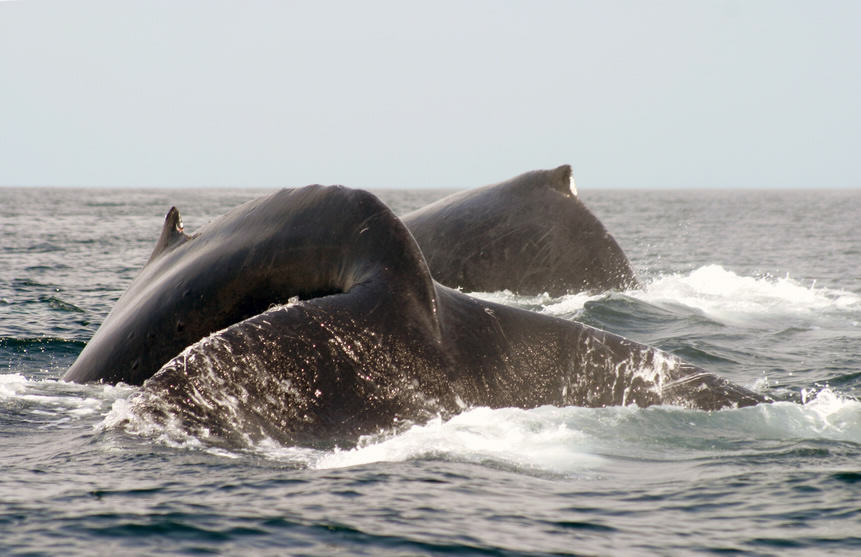Seeing Hawaii’s Gentle Giants of the Sea is Unforgettable
One of the most spectacular sights in Hawaii is seeing a 40 ton humpback whale fly up out of the sea, spin half way around in the air, and then come crashing down on its back with a thunderous splash.
Breaching whales are a fairly common sight during the winter months, particularly in the shallow waters off of Maui.
Humpback whales, also known by their Hawaiian name kohola, may be over 45 feet long. In Hawaiian waters they give birth to calves that are about 12 feet long and weigh about one and one half tons. The infant humpbacks feed on more than 100 gallons of their mother’s milk each day.
Hawaii’s humpback whales come from Alaskan waters where they spend the summer months feeding on krill and small fish. At the end of summer they migrate thousands of miles to the Hawaiian Islands where they mate and give birth.
The last whales to arrive in Hawaii are pregnant mothers who will stay in the food-rich northern waters as long as possible to prepare for the journey and the processes of birthing and nursing their young. Hawaii’s humpback population peaks around January and by February the whales gradually being leaving to head north again.
Humpback whales exhibit a variety of notable behaviors in Hawaiian waters. In addition to their fantastic breaches, they often slap a pectoral fin down onto the surface (the Pec Slap) or slap their tail (Tail Slap).
When a humpback whale pokes its head up out of the water to look around it is known as a Spy Hop.
Humpbacks are regularly seen spouting, sending up misty columns of air and water that can be seen from very far away. Humpbacks have to blowholes, or nares, on the top of their head, so their spout comes out in a large V-shaped spray.
If you get a chance to see a humpback whale up close you will also be able to see the many golf-ball sized bumps on its upper and lower jaws. These bumps are called tubercles, and each tubercle has a hair called a vibrissa which helps the whale sense temperature and vibrations.
For two-thirds of the length of the humpback whale’s underside are large furrowed ventral pleats that hold a great deal of skin. This allows the whale’s mouth to expand massively when they take in tons of water during feeding.
Humpbacks are baleen whales, which means that they don’t have teeth. Instead they have plates of baleen that hang from their upper jaw. Humpbacks feed by straining tiny organisms from large amounts of water using their baleen food-filtering abilities.
Humpbacks also emit long, complex songs that may be related to courtship activities. Some humback whale watching boats in Hawaii are equipped with hydrophones that allow you to listen in the whale’s vocalizations under water.
Underwater microphones transmit the sounds to speakers on the boat for your listening pleasure.
Humpback whales have the broadest tonal range of any animal – from their lowest low to their highest high. One humpback whale song usually lasts about 20 minutes long and then the whale repeats the same song over and over.
Humpback whales are an endangered species, having declined from original numbers of about 200,000 to less than 2,000 after the whaling era that ended several decades ago.
Humpback whale populations have been recovering in recent decades and now as many as 8,000 visit Hawaiian waters each winter. Seeing these migrating humpback whales makes Hawaii whale watching a wonderful and exhilarating experience.
A large area around the Hawaiian Islands was declared a Humpback Whale National Marine Sanctuary in 1992, ensuring visitors will be able to view these awesome behemoths of the sea for a long time to come!

